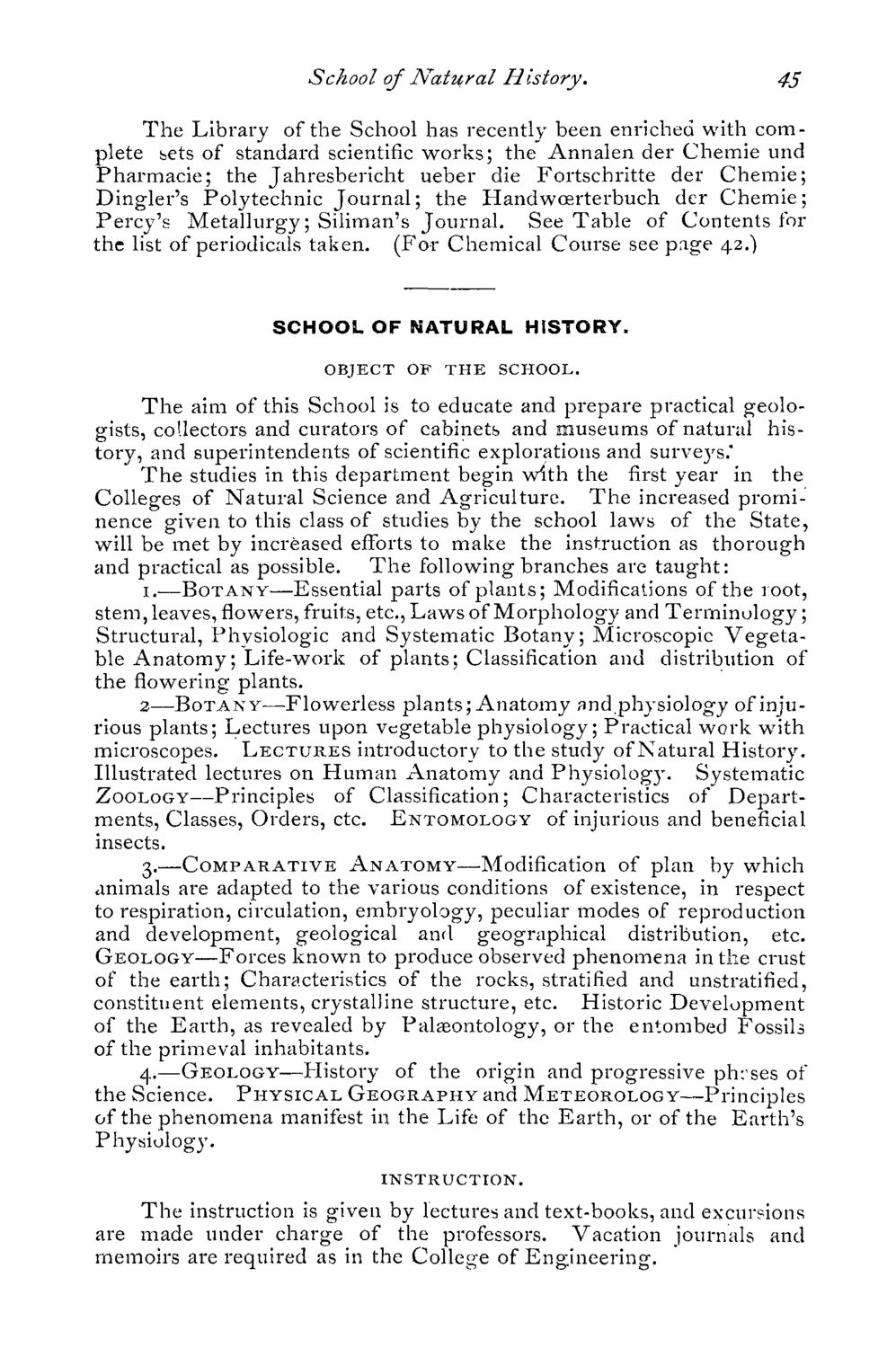| |
| |
Caption: Course Catalog - 1875-1876
This is a reduced-resolution page image for fast online browsing.

EXTRACTED TEXT FROM PAGE:
School of JYatitral History. 45 The Library of the School has recently been enriched with complete sets of standard scientific works; the Annalen der Chemie und Pharmacie; the Jahresbericht ueber die Fortschritte der Chemie; Dingler's Polytechnic Journal; the Handwcerterbuch der Chemie; Percy's Metallurgy; Siliman's Journal. See Table of Contents for the list of periodicals taken. (For Chemical Course see page 42.) SCHOOL OF NATURAL HISTORY. OBJECT OF THE SCHOOL. The aim of this School is to educate and prepare practical geologists, collectors and curators of cabinets and museums of natural history, and superintendents of scientific explorations and surve3's." The studies in this department begin with the first year in the Colleges of Natural Science and Agriculture. The increased prominence given to this class of studies by the school laws of the State, will be met by increased efforts to make the instruction as thorough and practical as possible. The following branches are taught: 1.—BOTANY—Essential parts of plants; Modifications of the root, stem, leaves, flowers, fruits, etc., Laws of Morphology and Terminology; Structural, Physiologic and Systematic Botany; Microscopic Vegetable Anatomy; Life-work of plants; Classification and distribution of the flowering plants. 2—BOTANY—Flowerless plants; Anatomy andphysiology of injurious plants; Lectures upon vegetable physiology; Practical work with microscopes. L E C T U R E S introductory to the study of Natural History. Illustrated lectures on Human Anatomy and Physiology. Systematic ZOOLOGY—Principles of Classification; Characteristics of Departments, Classes, Orders, etc. ENTOMOLOGY of injurious and beneficial insects. 3.—COMPARATIVE ANATOMY—Modification of plan by which animals are adapted to the various conditions of existence, in respect to respiration, circulation, embryology, peculiar modes of reproduction and development, geological and geographical distribution, etc. GEOLOGY—Forces known to produce observed phenomena in the crust of the earth; Characteristics of the rocks, stratified and unstratified, constituent elements, crystalline structure, etc. Historic Development of the Earth, as revealed by Palaeontology, or the entombed Fossils of the primeval inhabitants. 4.—GEOLOGY—History of the origin and progressive phrses of the Science. PHYSICAL GEOGRAPHY and METEOROLOGY—Principles of the phenomena manifest in the Life of the Earth, or of the Earth's Physiology. INSTRUCTION. The instruction is given by lectures and text-books, and excursions are made under charge of the professors. Vacation journals and memoirs are required as in the College of Engineering.
| |